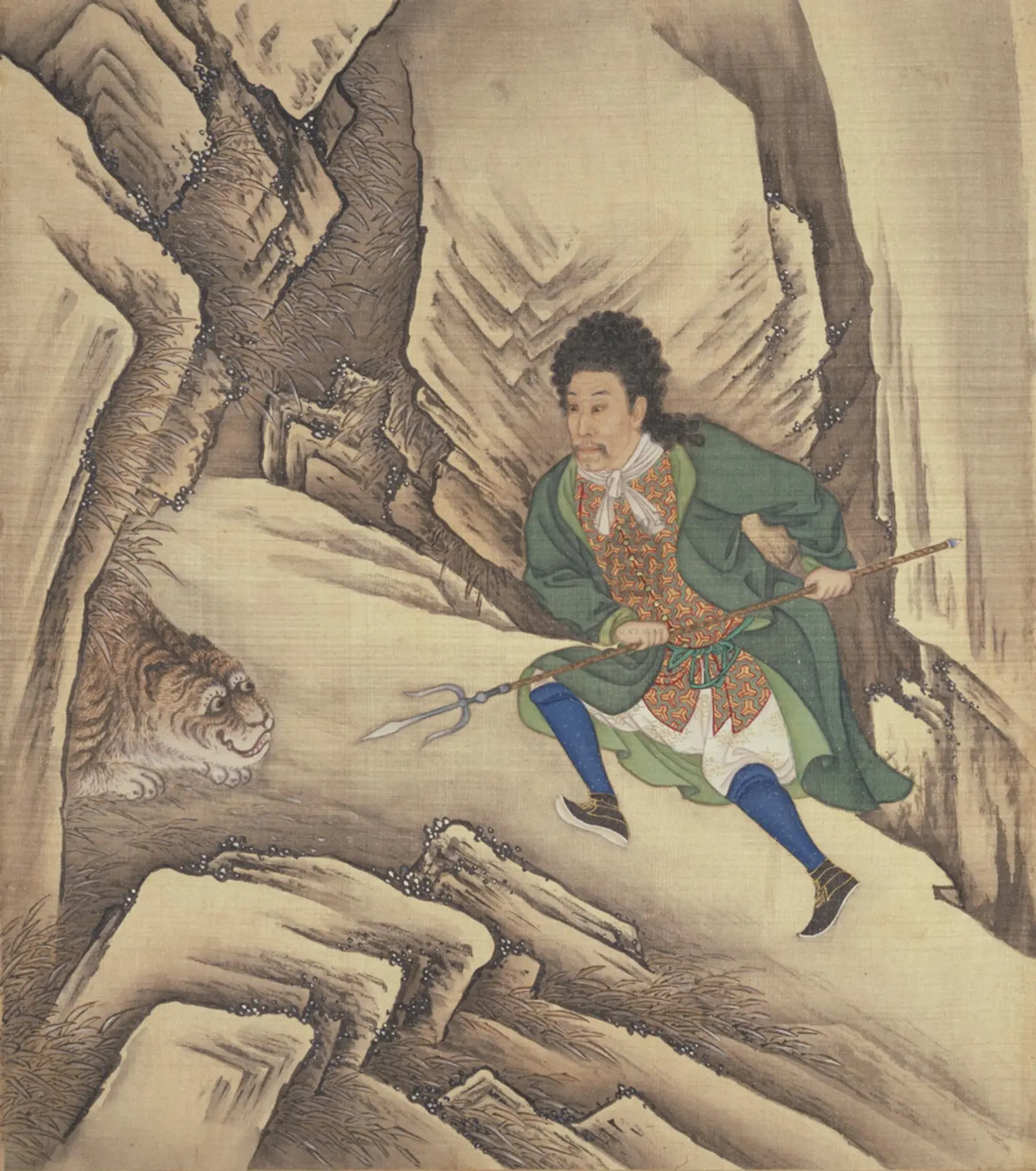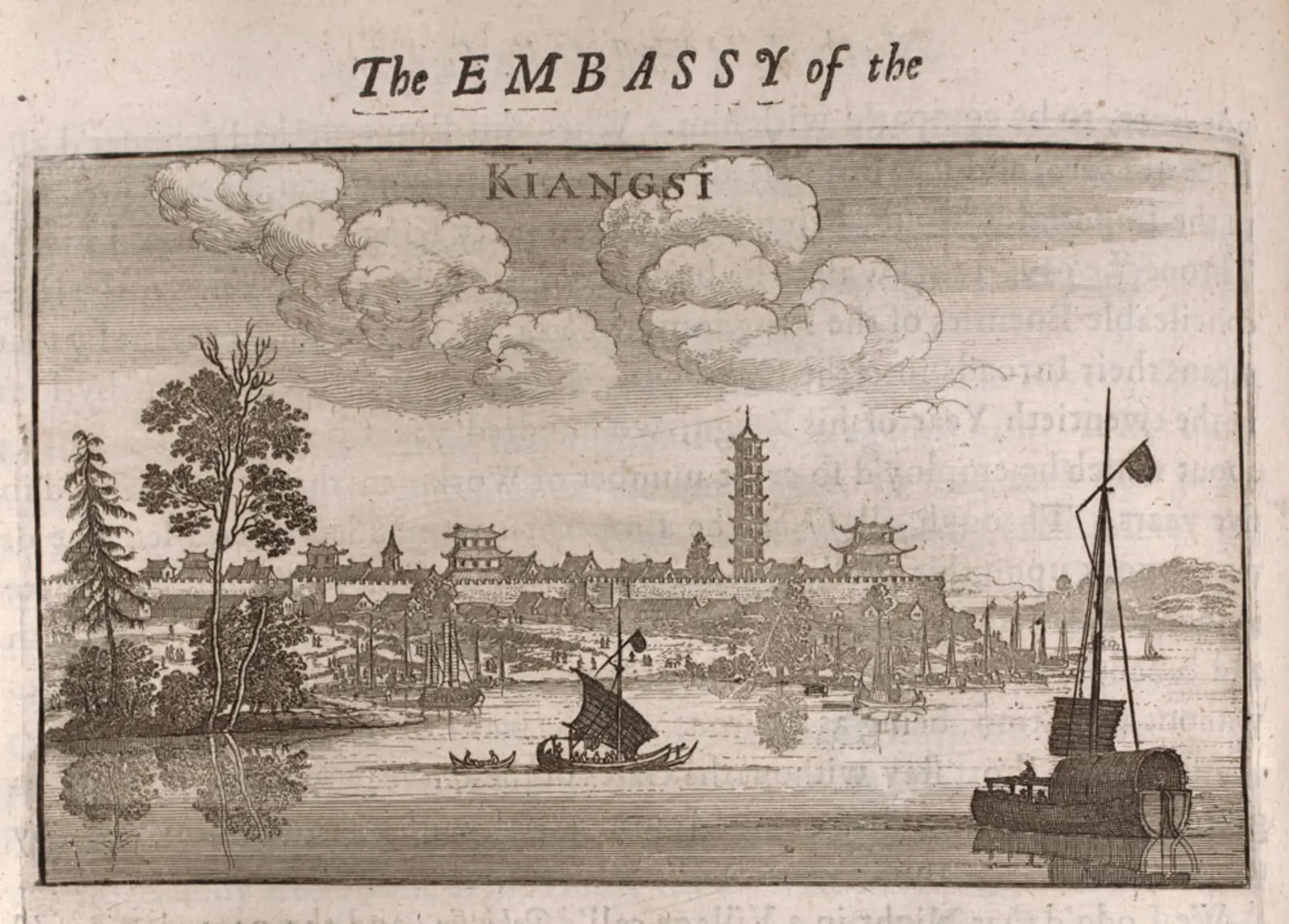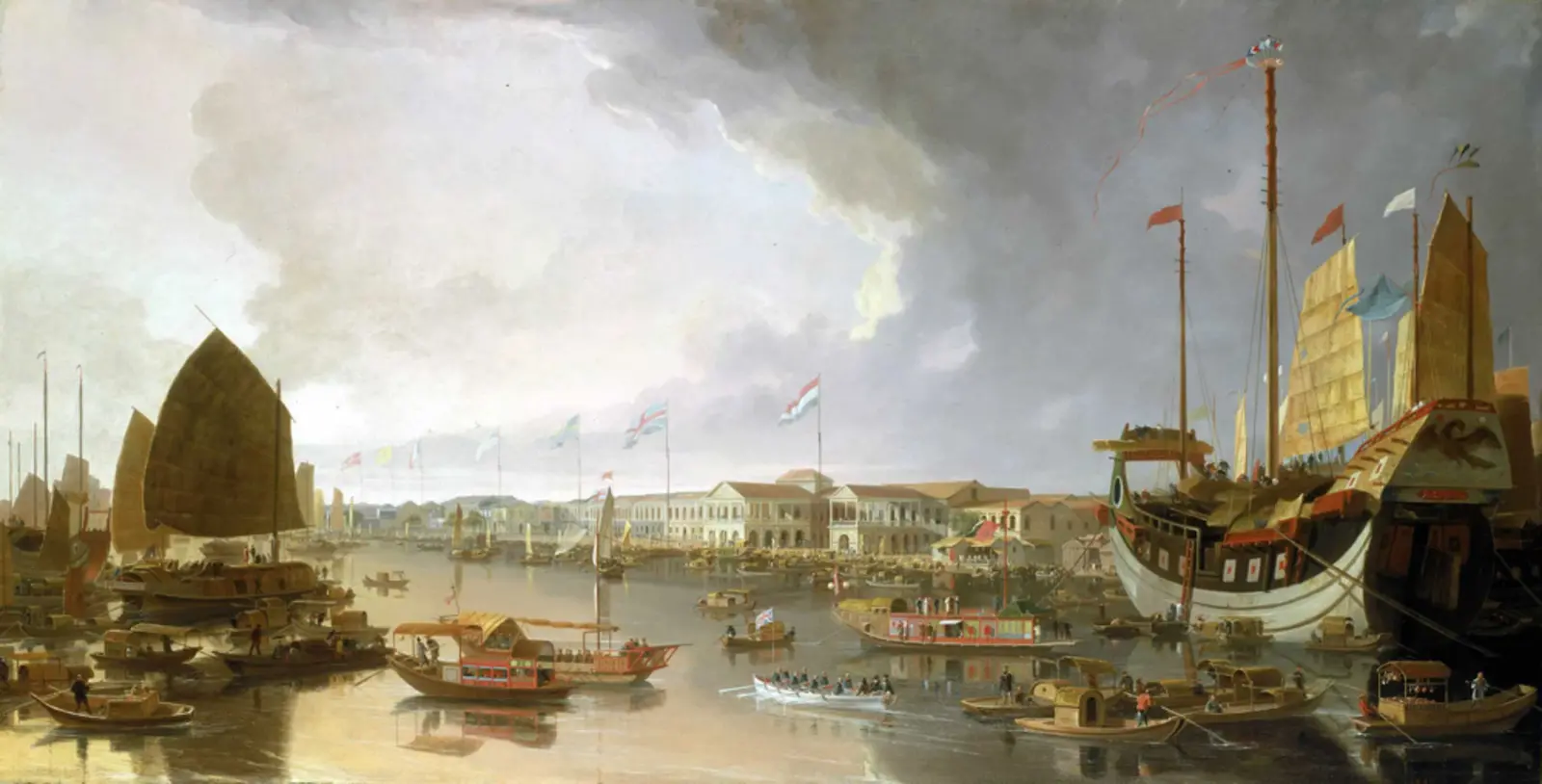
Yongzheng emperor (when still a prince), dressed as a European noble, from Yinzhen xingle tuce (胤禛行樂圖冊), by anonymous court artists, late Kangxi period (ca. 1710), ink and color on silk. | Palace Museum, Beijing.
The First Opium War (1839–42) is often considered the beginning of a “Century of National Humiliation,” a troubled period during which Westerners and Japan subjected the people of China to a series of armed conflicts and forced treaties. How did a country that was once the wealthiest and most powerful empire in the world find itself so vulnerable to Western aggression? Historians long thought they had an answer: The Qing dynasty (1644–1912) was arrogant, xenophobic, and closed to the world. If it had been more open, they argued, China would have been able to counter the Western advance and make itself competitive.
Recently, however, scholars have shown that the Qing were far more cosmopolitan, open, and connected than once believed. The Qing realm included not only core areas ruled by previous dynasties, such as the Ming (1368–1644), but also Manchuria (homeland of the Manchus and a nation from which sprang the Qing ruling family), Tibet, Mongolia, and far western regions inhabited primarily by Turkic peoples. The Qing had four official languages: Chinese, Manchu, Mongolian, and Tibetan. Qing rulers considered themselves at home in a variegated and multilingual world, and they welcomed visitors from many lands beyond their empire’s borders.
Of those visitors, perhaps the most exotic, at least from the Qing perspective, were Europeans, with their curly hair, close-fitting legwear, and strange-sounding languages. Consider, for instance, the painting of Qing Prince Yinzhen (above), who would later become the Yongzheng emperor (1722–35). He liked to have portraits of himself painted in the costumes of different countries and is depicted here as a European noble, with curly hair, culottes, tight stockings, and a kerchief—all considered exotic hallmarks of Western Europeans at the time.
Although the artist of this work is anonymous, the painting bears characteristics of the Qing court’s hybrid artistic styles, which incorporated subjects and techniques from Western European art, due in part to the influence of Western painters who became favored Qing court painters, most famously the Italian Jesuit Giuseppe Castiglione (1688–1766). He and other Western artists introduced Renaissance perspective and portraiture modes, among other things, to the Qing court, and these were eagerly adopted by other Qing court painters.
Jesuits were allowed to reside permanently in the Qing court, but other Europeans were not. Indeed, Europeans were generally forbidden from remaining in the interior of China. As a result, most contact with Western Europeans took place in Guangzhou (Canton), a city more than 1,200 miles from the capital, Beijing. Guangzhou was the empire’s sole port open to legal trade with people from the “Western Oceans,” a group that included Western European nations.
In the painting above, the Western lodges in the port city of Guangzhou are flying Dutch, British, and Swedish flags. These lodges lay just outside the city’s walls. No European-style ships are visible because European vessels were required to dock about 20 miles downstream at Huangpu. Europeans were also forbidden to reside in their lodges after the trading season. These and other restrictions were frustrating, especially to the British government, which sent embassies to the emperor to try to gain more favorable conditions, asking for, among other things, bases on the Chinese coast. It was an assertive demand, and when it was not granted, British attitudes toward the Qing worsened, preparing a sort of ideological groundwork for the British hostilities that opened up the First Opium War in 1839.
Other European powers, such as the Dutch, whose lodge stood right next to that of the British, were more willing to abide by Qing policies. The Dutch were the first Europeans to dispatch an embassy to the Qing court, and over the ensuing years, they dispatched several more. All were received without rancor, in contrast to the reception of the British embassies.

“Kiangsi” [Jiangxi] in Johannes Nieuhof (1618–72), An Embassy from the East-India Company (London: 1673), page 132, RB 128905. | The Huntington Library, Art Museum, and Botanical Gardens.
The illustration above, a product of the first Dutch embassy, was published in a famous book by Johannes Nieuhof (1618–72), who was in China at the beginning of the Qing dynasty in the 1650s. In An Embassy from the East-India Company, Nieuhof, the embassy’s steward, describes in vivid terms his journey through the war-torn countryside, where he dined with generals and drank with Manchu noblewomen. Throughout the journey, he made sketches, many of which were eventually included in the book. The volume was later translated into multiple European languages, providing the West with unprecedented information about China.
An English translation of Nieuhof’s book is in The Huntington’s collection, and it will be one of the items scholars will consider during a conference in Haaga Hall, April 12–13: “Gods, Guns, and Gardens: China and the West, from the Manchu Conquest to the Opium Wars.” Participants from around the world will explore Qing and Western interactions from the beginning of the Qing dynasty in 1644 through the Second Opium War (1856–60), discussing trade, art, gardens, missionaries, embassies, and the influence of the Qing on European cultural and intellectual life.
Funding for this conference has been provided by the USC-Huntington Early Modern Studies Institute and an anonymous donor.
Tonio Andrade is professor of Chinese and global history at Emory University and the author of The Last Embassy: The Dutch Mission of 1795 and the Forgotten History of Western Encounters with China (Princeton University Press, 2021).


